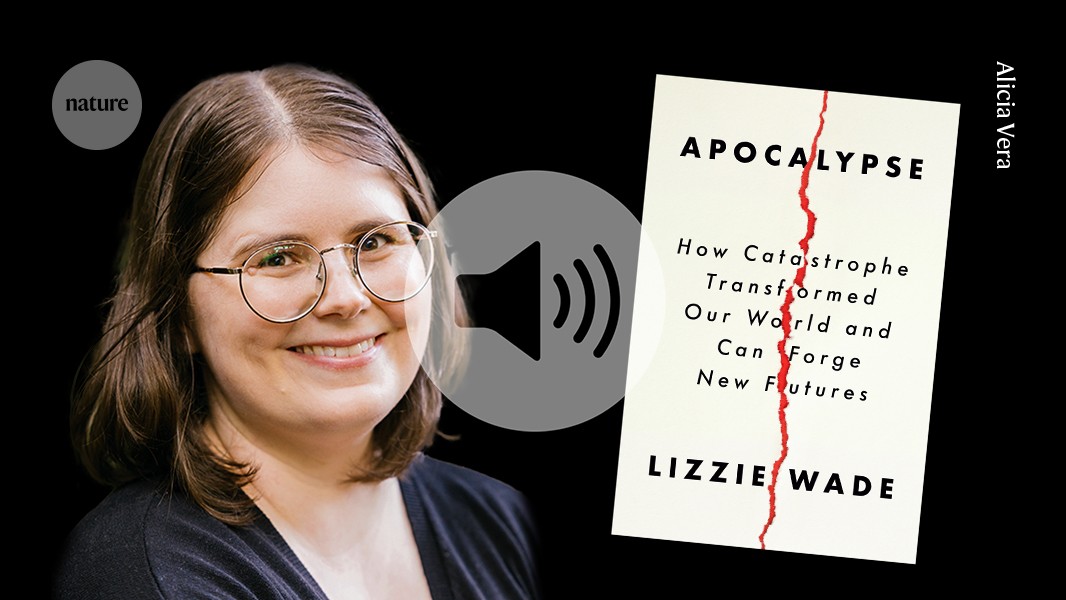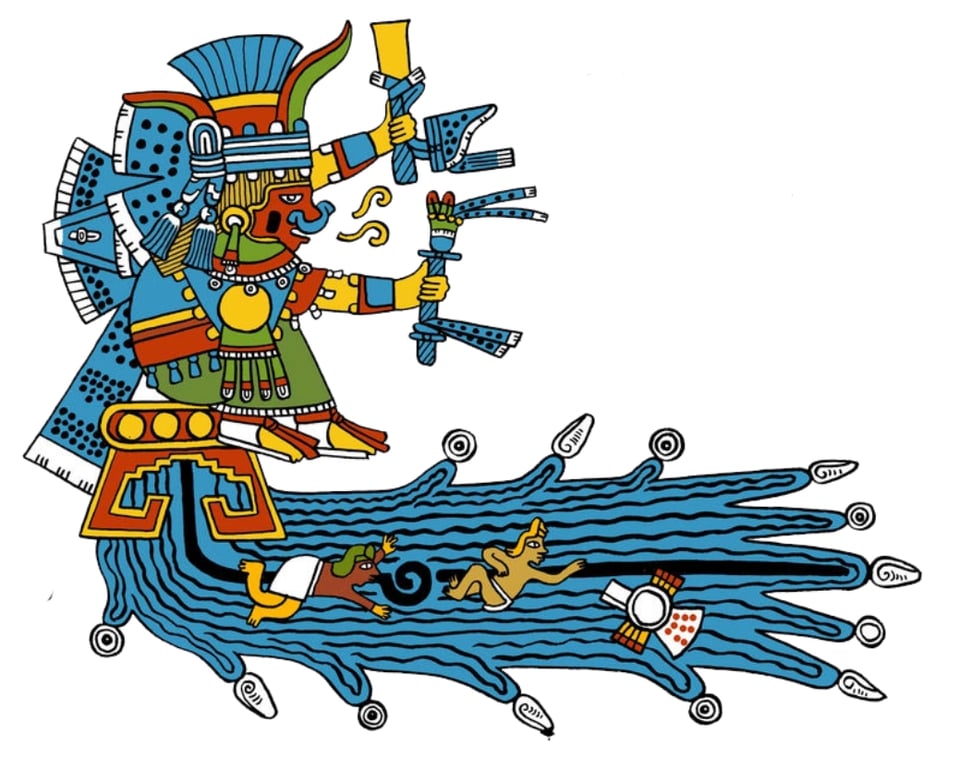The old goddess
Chalchiuhtlicue’s wild waters
APOCALYPSE and I were featured on the Nature podcast! I love a conversation with a fellow nerd. Click below to listen or find it in your podcast player.

Apocalypse then: how cataclysms shaped human societies
Lizzie Wade talks to Nature about her book Apocalypse.
My apologies for the lack of a newsletter last week; I had my first post-book feature deadline on Monday. I’m disappointed to report that publishing a book doesn’t make writing first drafts any easier. Oh well.
Otherwise, I’m back on my bullshit (researching the history of hydraulic engineering in Mexico City), and I have a new Aztec deity to believe it. I previously wrote about Tlaloc, the rain god, and his eternal power over urban life in the Valley of Mexico. But he has a counterpart who is far less appreciated, even though I’ve recently started seeing her everywhere. She is Chalchiuhtlicue, either Tlaloc’s sister or wife, the goddess of water once it reaches earth: lakes, rivers, seas, and floods.

Tlaloc is instantly recognizable by his goggle eyes, and Chalchiuhtlicue by her fan-shaped, tasseled headdress. Her name refers to her skirt of jade, and she was the patron of the destruction of the Fourth Sun, the world previous to the one the Mexica inhabited, and which had ended in a calamitous flood. In the Florentine Codex, Nahua scholars wrote of her:
Hence she was esteemed, feared, and held in awe; hence she terrified men. [For] she killed men in water, she plunged them in water as it foamed, swelled and formed whirlpools about them; she made the water swirl; she carried men to the depths…
The water was restless: the waves roared; they dashed and resounded. The water was wild…
And when (there was) no wind, it was calm; the water spread like a mirror, gleaming, glittering.1
I learned about Chalchiuhtlicue from The Death of Aztec Tenochtitlan, the Life of Mexico City by Barbara E. Mundy, a fascinating and beautiful book (so many incredible pictures!). Chalchiuhtlicue is all over the place in Mexica literature and art, pre- and post-conquest, and Mundy identifies her on the back of a sculpture called the Teocalli of the Sacred War, otherwise known as Moctezuma’s Throne, made around 1507 early in the reign of the last huey tlatoani. The image is dominated by the familiar symbol of the founding of Tenochtitlan, the eagle perched on the nopal cactus, the fulfillment of the Mexica’s patron Huitzilopochtli’s promise to lead them to a new homeland (now most famously seen on the Mexican flag). But this version of the myth has a twist: The cactus is growing out the sacrificed body of Chalchiuhtlicue.

Chalchiuhtlicue’s head and torso are now eroded, but Mundy picks out the outline of her headdress (on the left), the water surrounding her (seen most clearly around the headdress), the jade beads on her skirt (the dangling circles to the right), and her sandals (feet are lower right). The image of a supine, sacrificed goddess at the base of a symbol of creation is a common one in Mexica mythology, including in the story of creation of the earth itself. Controlling Chalchiuhtlicue and her “wild” waters was just as essential to Tenochtitlan’s existence as the fulfillment of Huitzilopochtli’s prophecy.
Moctezuma Xocoyotzin, the Mexica emperor when the Spanish invaders arrived, assumed the throne after the death of his uncle Ahuitzotl. Ahuitzotl presided over the construction of a second aqueduct to bring additional freshwater to Tenochtitlan during a dry period—to disastrous results. When the rains returned and the lake rose, that aqueduct ended up causing a devastating flood in 1499. Moctezuma likely expected that reestablishing control over Chalchiuhtlicue’s lake, and the Mexica people’s trust in their huey tlatoani’s ability to do so, would be the defining challenge of his reign. He might have even thought so the day he took his foreign guests out for a spin on that lake, its gleaming mirror-like surface disguising, for a moment, the threat of violence that lay beneath.
Quoted in Mundy, Barbara E. The Death of Aztec Tenochtitlan, the Life of Mexico City. University of Texas Press, 2015, p.43 ↩
